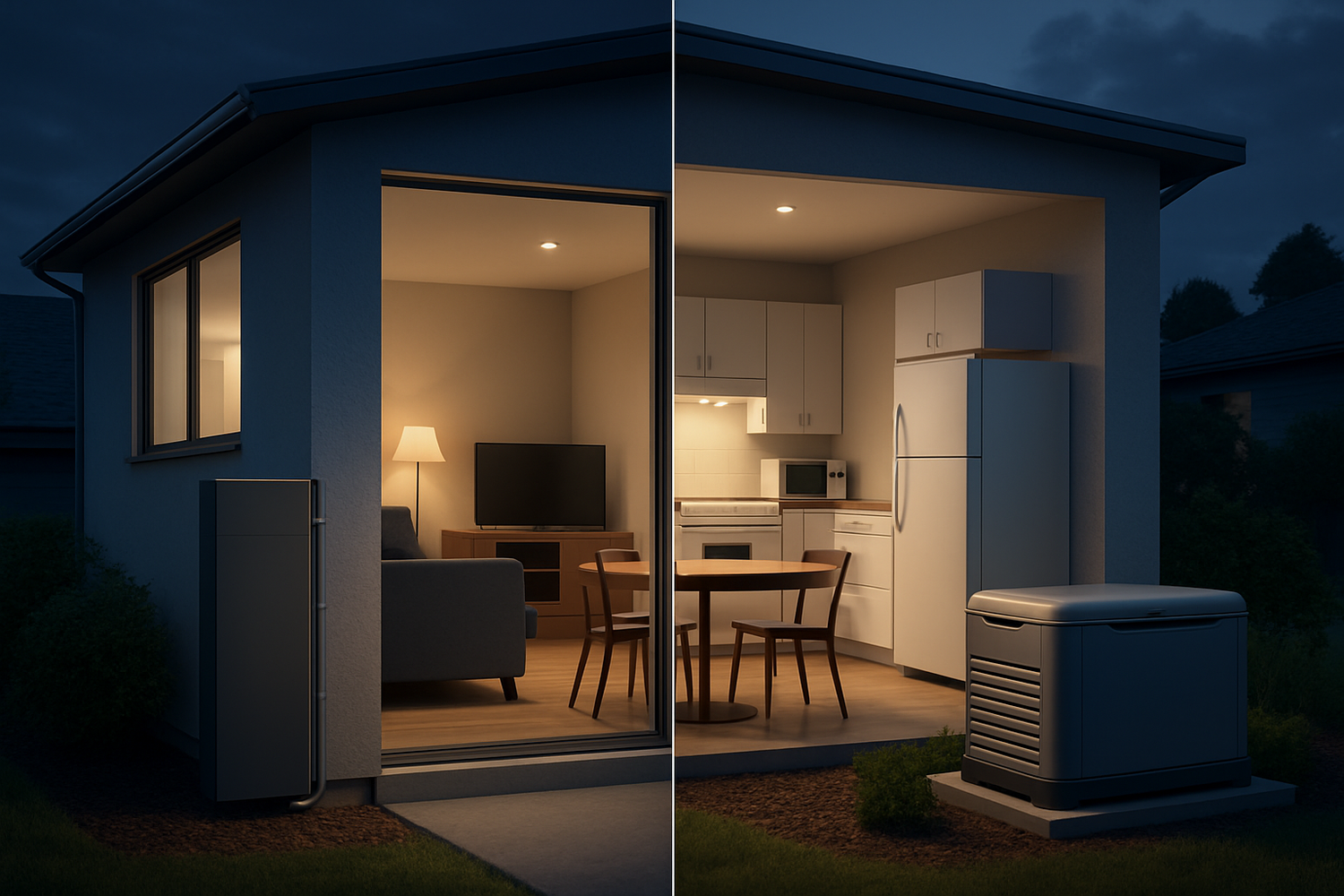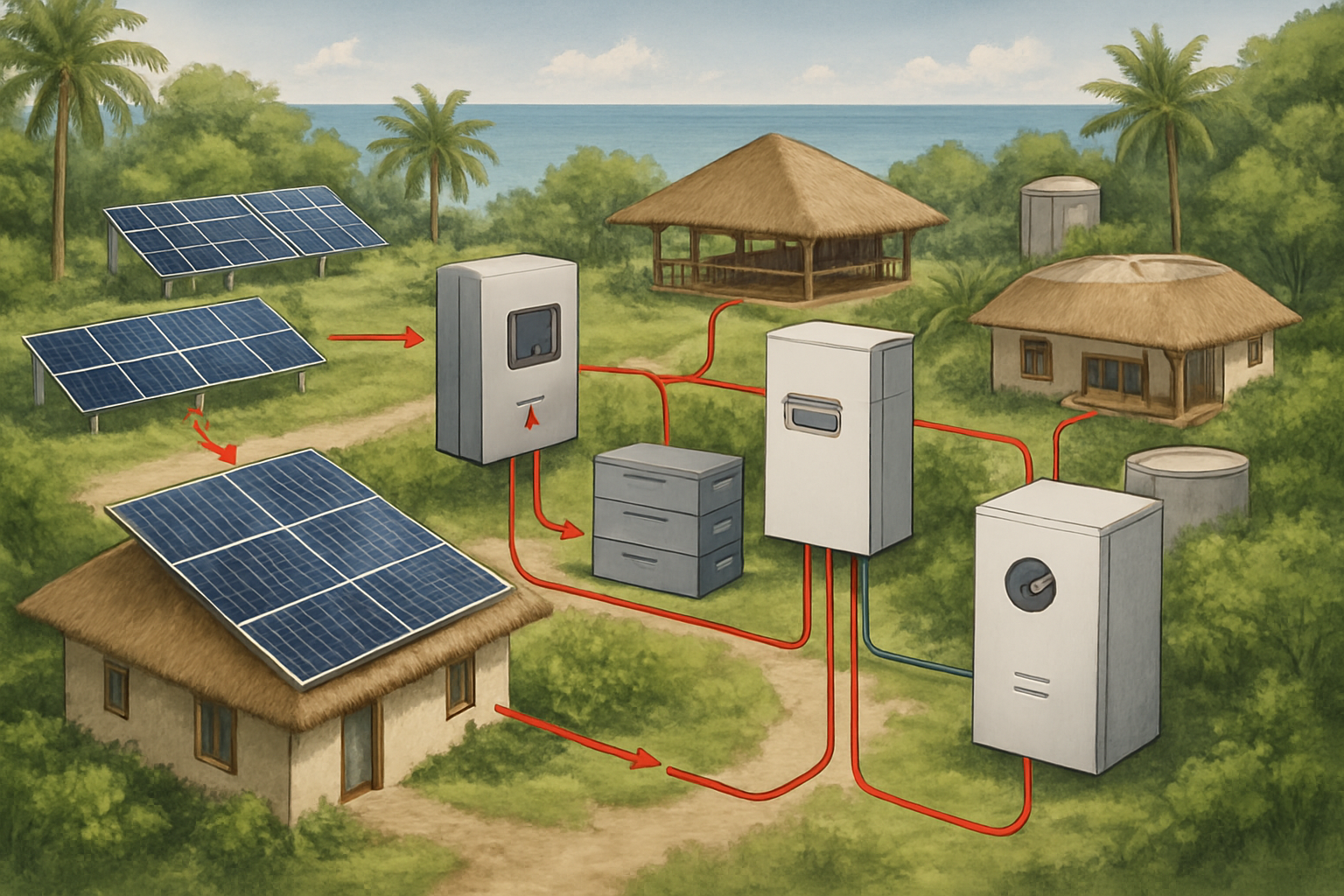Meta Description: Compare battery backup vs generator systems. Expert analysis of costs, reliability, maintenance, and performance to help you choose the right emergency power solution.
Power outages strike without warning. I've witnessed countless homeowners scramble in the dark, realizing their backup power strategy fell short. After years in the energy storage industry, I've seen the evolution from noisy, fuel-dependent generators to silent, efficient battery systems. This comprehensive guide examines both solutions to help you make an informed decision for your emergency power needs.
The choice between battery backup and generators isn't just about keeping lights on—it's about reliability, cost-effectiveness, and long-term energy independence. Each system offers distinct advantages depending on your specific requirements, budget, and usage patterns.

Understanding Emergency Power Solutions
What Is Battery Backup?
Battery backup systems store electrical energy in rechargeable batteries, typically lithium iron phosphate (LiFePO4) or lithium-ion cells. These systems convert stored DC power to AC power through inverters, providing seamless power during outages.
Modern battery systems integrate with solar panels, creating comprehensive energy storage solutions. During normal operation, excess solar energy charges the batteries. When grid power fails, the system automatically switches to battery power within milliseconds.
Battery capacity is measured in kilowatt-hours (kWh), determining how long your system can power essential loads. A typical residential system ranges from 10-20 kWh, sufficient for critical appliances during extended outages.
What Are Generators?
Generators convert mechanical energy into electrical energy using internal combustion engines. They burn fuel—natural gas, propane, or diesel—to rotate an alternator that produces electricity.
Standby generators permanently connect to your home's electrical system and start automatically during outages. Portable generators require manual setup and fuel management. Whole-house generators can power entire homes, while smaller units handle essential circuits only.
Generator capacity is measured in kilowatts (kW), indicating maximum power output. Residential units typically range from 7-22 kW, with larger commercial units reaching 150 kW or more.
Key Performance Metrics
Several factors determine backup power system effectiveness:
- Response Time: How quickly power restoration occurs after outage detection
- Runtime: Maximum continuous operation duration
- Power Quality: Voltage stability and frequency consistency
- Maintenance Requirements: Service frequency and complexity
- Environmental Impact: Emissions, noise, and fuel consumption
Battery Backup Advantages and Disadvantages
Battery Backup Pros
Silent Operation: Battery systems operate without noise, making them ideal for residential areas with noise restrictions. You can install them indoors or near living spaces without disturbing neighbors or family members.
Instant Power Transfer: Batteries provide uninterruptible power supply (UPS) functionality, switching to backup power within 10-20 milliseconds. This prevents sensitive electronics from experiencing power interruptions that could cause data loss or equipment damage.
Zero Emissions: Battery systems produce no direct emissions during operation. When paired with solar panels, they create completely clean energy cycles, reducing your carbon footprint significantly.
Minimal Maintenance: Modern LiFePO4 batteries require virtually no maintenance. No oil changes, filter replacements, or fuel system servicing. Annual inspections ensure optimal performance, but day-to-day operation is hands-off.
Indoor Installation: Compact battery systems install inside garages, basements, or utility rooms. This protects equipment from weather and theft while maintaining easy access for monitoring.
Grid Services Integration: Advanced battery systems participate in utility programs, earning revenue through demand response and grid stabilization services. Some utilities offer time-of-use arbitrage opportunities, reducing electricity costs.
Battery Backup Cons
Higher Upfront Costs: Quality battery systems require significant initial investment. A 15 kWh residential system typically costs $15,000-25,000 installed, compared to $3,000-6,000 for comparable generator capacity.
Limited Runtime: Battery capacity determines maximum runtime. Without solar recharging, most residential systems provide 8-24 hours of power for essential loads. Extended outages may exhaust battery reserves.
Temperature Sensitivity: Battery performance degrades in extreme temperatures. Cold weather reduces capacity and charging efficiency, while excessive heat accelerates degradation and shortens lifespan.
Power Output Limitations: Battery inverters have maximum power ratings. High-draw appliances like electric water heaters or air conditioners may exceed system capacity, requiring load management strategies.
Replacement Costs: Battery degradation over time necessitates eventual replacement. While modern LiFePO4 batteries last 10-15 years, replacement costs represent significant long-term expenses.
Generator Advantages and Disadvantages
Generator Pros
Lower Initial Investment: Generators offer more affordable entry points for backup power. Portable units start under $1,000, while whole-house standby generators cost $3,000-8,000 installed—significantly less than equivalent battery systems.
Unlimited Runtime: As long as fuel supply continues, generators can operate indefinitely. Natural gas generators connect to utility lines for continuous fuel supply, while propane and diesel units require periodic refueling.
High Power Output: Generators excel at powering high-demand appliances. A 20 kW generator can simultaneously run air conditioning, electric heat, water heaters, and all household loads without power management concerns.
Proven Technology: Generator technology has decades of refinement and field testing. Service technicians are widely available, and replacement parts are readily accessible for most brands and models.
Weather Independence: Generators perform consistently across temperature ranges. Cold weather may affect starting, but operation remains stable once running. Fuel combustion provides reliable power regardless of ambient conditions.
Generator Cons
Noise Pollution: Generators produce 60-75 decibels during operation—equivalent to normal conversation volume. This noise can disturb neighbors and may violate local noise ordinances, especially during nighttime operation.
Emissions and Environmental Impact: Fossil fuel combustion produces carbon dioxide, nitrogen oxides, and other pollutants. A typical residential generator emits 2-4 tons of CO2 annually during regular testing and outage operation.
Fuel Dependency: Generators require continuous fuel supply. Propane tanks need refilling, diesel fuel degrades over time, and natural gas supply can be interrupted during disasters. Fuel costs add ongoing operational expenses.
Maintenance Requirements: Regular maintenance includes oil changes, filter replacements, spark plug servicing, and fuel system cleaning. Annual professional servicing costs $150-300, with additional repair expenses for aging units.
Installation Complexity: Standby generators require electrical connections, fuel lines, concrete pads, and permit approvals. Installation typically takes 1-2 days and may require utility coordination for natural gas connections.
Transfer Switch Delays: Automatic transfer switches typically delay 10-30 seconds before starting generators, then additional time for power stabilization. This delay can disrupt sensitive electronics and cause data loss.
Cost Analysis and Total Cost of Ownership
Initial Investment Comparison
The upfront cost difference between battery backup and generators is substantial but narrows when considering total system capabilities:
| System Type | Capacity | Equipment Cost | Installation Cost | Total Initial Investment |
|---|---|---|---|---|
| Portable Generator | 5-7 kW | $800-1,500 | $200-500 | $1,000-2,000 |
| Standby Generator | 10-20 kW | $3,000-6,000 | $2,000-4,000 | $5,000-10,000 |
| Battery System | 10-15 kWh | $12,000-18,000 | $3,000-5,000 | $15,000-23,000 |
| Solar + Battery | 8 kW + 15 kWh | $20,000-28,000 | $4,000-6,000 | $24,000-34,000 |
Federal tax credits reduce battery system costs by 30% through 2032, while some states offer additional rebates. Generators receive no federal incentives, though some utilities provide rebates for demand response participation.
Operating and Maintenance Costs
Long-term ownership costs reveal significant differences between systems:
Generator Annual Costs:
- Maintenance: $200-400
- Fuel for testing: $100-300
- Repairs (average): $150-500
- Total: $450-1,200 annually
Battery System Annual Costs:
- Maintenance: $50-100
- Monitoring fees: $0-120
- Insurance adjustment: $25-75
- Total: $75-295 annually
Over a 15-year period, generator operating costs typically exceed $8,000-15,000, while battery systems require $1,500-4,000. This operational cost difference significantly reduces the total cost of ownership gap.
For detailed financial analysis comparing systems over extended periods, reference our Data-Backed TCO: Batteries vs Generators Over 10 Years study.
Value-Added Benefits
Battery systems provide additional value streams unavailable with generators:
- Time-of-Use Arbitrage: Store low-cost electricity during off-peak hours, use during peak rate periods
- Demand Charge Reduction: Shave peak demand to reduce commercial electricity bills
- Grid Services Revenue: Participate in utility programs for frequency regulation and demand response
- Solar Self-Consumption: Maximize solar investment by storing excess production for later use
These benefits can generate $200-800 annually in savings or revenue, further improving battery system economics.
Performance and Reliability Factors
Power Quality and Consistency
Power quality significantly impacts sensitive electronics and modern appliances. Battery systems excel in this area, providing clean, stable power that matches or exceeds grid quality standards.
Battery inverters produce pure sine wave output with less than 3% total harmonic distortion (THD). This clean power protects computers, medical equipment, and variable-speed motors from damage or malfunction.
Generators produce varying power quality depending on engine speed stability and load conditions. Portable units may exhibit 5-8% THD, while quality standby generators maintain 2-5% THD under stable load conditions.
Startup and Response Times
Response time determines protection level for sensitive equipment:
Battery Systems: Instantaneous switching (10-20 milliseconds) prevents any power interruption. UPS functionality maintains power to critical loads without disruption.
Generators: Automatic transfer switches delay 10-30 seconds before starting engines, then require additional stabilization time. Total restoration time ranges from 30-90 seconds depending on system design.
For applications requiring uninterrupted power—home offices, medical equipment, security systems—battery backup provides superior protection. Our analysis in Battery Backup vs Generator: What Truly Keeps You Safe? explores these critical differences.
Scalability and Expandability
System expansion capabilities differ significantly:
Battery Systems: Modular design allows incremental capacity additions. Add battery modules or parallel systems to increase storage capacity. Solar integration expands with additional panels and charge controllers.
Generators: Limited expandability without complete system replacement. Transfer switch capacity determines maximum load handling. Fuel supply systems may require upgrades for larger generators.
Battery modularity provides flexibility for changing power needs, while generators require careful initial sizing to avoid costly replacements.
Climate and Environmental Resilience
Environmental conditions affect system reliability differently:
Cold Weather Performance:
- Batteries: 10-20% capacity reduction below 32°F, slower charging rates
- Generators: Starting difficulties below 0°F, but stable operation once running
Hot Weather Performance:
- Batteries: Accelerated degradation above 85°F, thermal management required
- Generators: Reduced output capacity, increased cooling system stress
Extreme Weather Events:
- Batteries: Indoor installation provides weather protection, no fuel supply interruption
- Generators: Vulnerable to flooding, wind damage, fuel delivery disruptions
Our case study Which Backup Wins in Winter Storms: Battery or Generator? provides real-world performance data from recent severe weather events.
Application-Specific Considerations
Residential Applications
Home backup power needs vary significantly based on family size, appliance types, and lifestyle requirements. Essential loads typically include refrigeration, lighting, communications, and heating/cooling systems.
Small Homes (1,000-1,500 sq ft):
- Battery: 10-15 kWh system handles essential loads for 12-24 hours
- Generator: 7-10 kW unit powers most appliances simultaneously
- Recommendation: Battery system for quiet neighborhoods, generator for extended outages
Large Homes (2,500+ sq ft):
- Battery: 20-30 kWh system required, may need load management
- Generator: 15-22 kW unit handles whole-house loads
- Recommendation: Hybrid approach or generator for full-house coverage
For specific sizing guidance, consult our detailed analysis in How to Size Battery vs Generator for Critical Home Loads.
Commercial and Industrial Applications
Business continuity requirements often justify higher initial investments for superior





Leave a comment
All comments are moderated before being published.
This site is protected by hCaptcha and the hCaptcha Privacy Policy and Terms of Service apply.